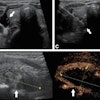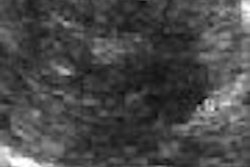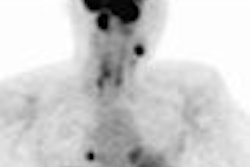Contrast-enhanced grayscale transrectal ultrasound (CETRUS) may offer value in characterizing peripheral zone hypoechoic prostate lesions, according to research presented at the 2007 RSNA meeting in Chicago.
"Contrast-enhanced ultrasound could afford information on discrimination of prostate cancer from benign disease, and the peak intensity would be the optimal parameter," said Dr. Jing Chun Yang of Chinese People's Liberation Army (PLA) General Hospital in Beijing. She presented her team's research during a scientific session at the show.
Contrast-enhanced ultrasound offers an innovative approach for imaging neovascularity associated with prostate cancer, Yang said. Grayscale imaging techniques also provide several advantages over color and power Doppler methods, including higher spatial and temporal resolution. In addition, CETRUS doesn't suffer from blooming or flash artifacts, she said.
To assess the usefulness of CETRUS in predicting the benignity and malignancy of peripheral zone hypoechoic prostate lesions, the researchers evaluated 91 patients with a solitary hypoechoic lesion.
Patients were scanned on a Sequoia scanner (Siemens Medical Solutions, Malvern, PA) using contrast pulse sequence imaging and the Sonovue contrast agent (Bracco, Milan, Italy). Ultrasound studies were then followed by lesion-specific transrectal ultrasound-guided biopsies.
The most common enhancement of malignant lesions was the increased intensity within the lesion; most benign lesions showed low enhancement or decreased intensity compared with surrounding tissues, Yang said. Peak intensity was much higher in malignant lesions than in benign lesions.
The researchers determined that the optimal peak intensity cut-off value was 9.2 dB, leading to a sensitivity of 71% and a specificity of 64.7% for CETRUS. There was no correlation between contrast parameters and age, prostate-specific antigen (PSA) level, size of lesion, and prostate volume, she said. They also didn't find any correlation with Glaser score and enhancement pattern within the lesion.
By Erik L. Ridley
AuntMinnie.com staff writer
December 6, 2007
Related Reading
Gold marker implants for prostate radiotherapy safe, study finds, November 20, 2007
Electromagnetic anisotropy detects prostate cancer noninvasively, November 15, 2007
ASTRO: Younger men benefit from prostate brachytherapy, November 1, 2007
CEUS shows promise for monitoring prostate ablation, May 24, 2006
Contrast ultrasound shows potential for prostate cancer detection, October 24, 2003
Copyright © 2007 AuntMinnie.com




















